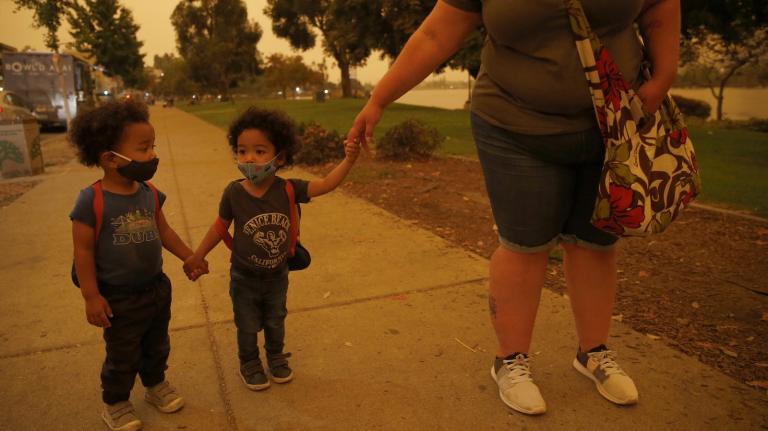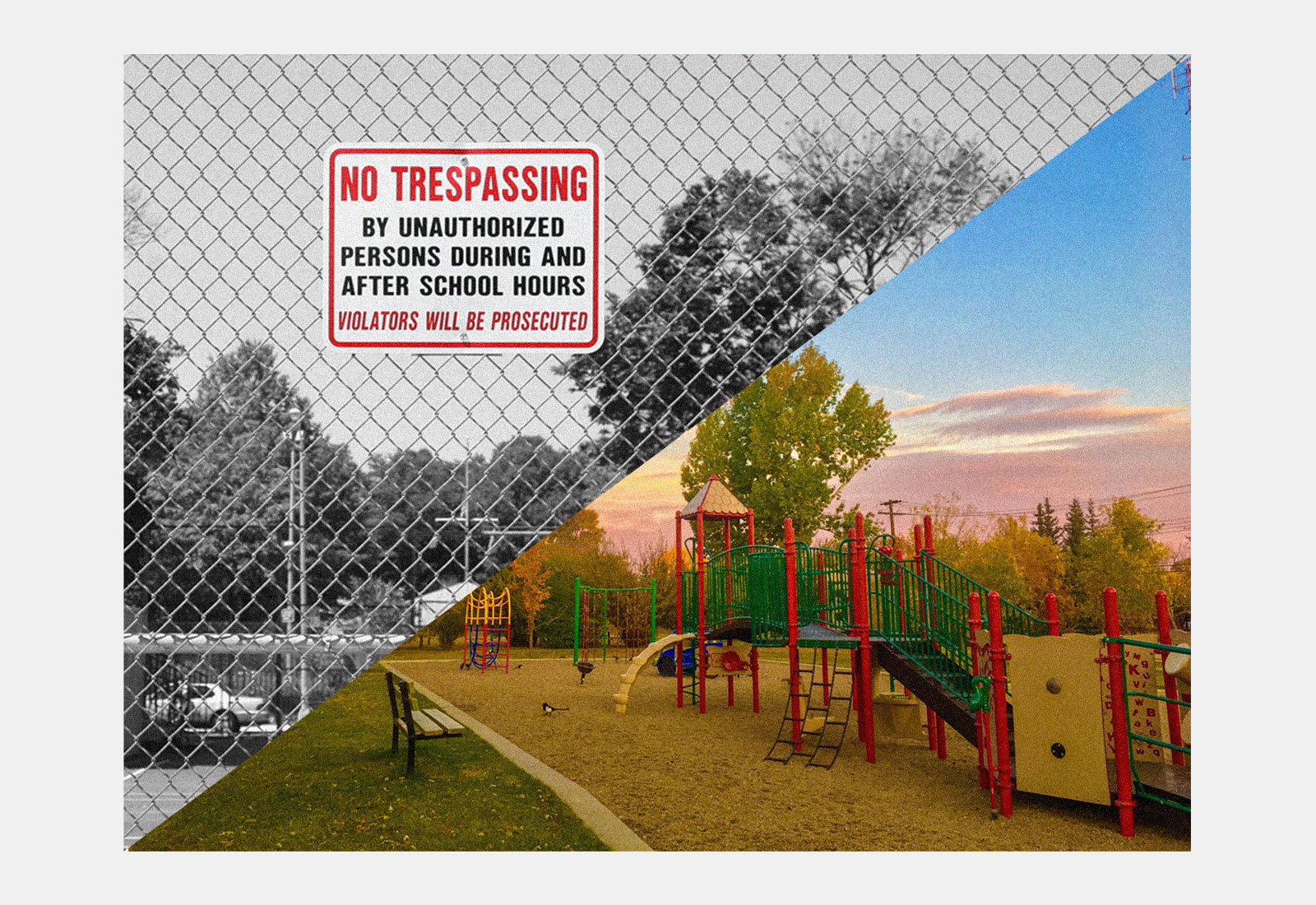Every morning, I take a three-minute stroll from my apartment on the Northside of Chicago to the closest school, Eugene Field Elementary. The open schoolyard is equipped with everything I need: a running track, turf soccer field, basketball court, jungle gym, and a yard filled with native plants. The public space gives me the opportunity to meet my neighbors, play sports with local youth, and reap the benefits of outdoor exercise.
I’m part of a lucky group of Americans that have access to an open green space within a mile of where they live. Others are not so fortunate: The nonprofit environmental advocacy group The Trust for Public Land, or TPL, estimates that 100 million people in America, including 28 million kids, don’t have a park within a 10-minute walk of their home. Race plays a major role in the divide: The group estimates that, in the 100 largest U.S. cities, communities of color have access to an average of 44 percent less park space than predominantly white neighborhoods.
Without access to green spaces, communities lose out on a multitude of environmental benefits, in addition to losing out on a place to gather, exercise, and play. Grass and plants act as sponges that can help prevent urban flooding, sprawling trees and heat-absorbing soils combat deadly urban heat, and vegetation naturally rids the air of pollution.
But TPL argues that there is an easy way for communities to regain these benefits: opening up all public schoolyards, like the one I utilize, to the broader public — and ensuring that those schoolyards contain vegetation on par with that found in actual parks. According to the organization’s most recent community schoolyard report, which mapped every public K-12 school in the country alongside public parks, renovating and opening up schoolyards would give 20 million more people access to a park within a 10-minute walk of their home. This two-pronged proposal is calling on local school districts and governments to tear down fences and bring greenery to their asphalt schoolyards.
“Schoolyards offer a really powerful and simple opportunity to offer more people park access,” Linda Hwang, director of strategy and innovation at TPL, told Grist. “For many communities, this was never considered before — people thought of school as just school, not realizing its value as a community hub.”
While some cities, such as Atlanta and Oakland, already use an open-access system for schoolyards, implementing this approach nationwide could have an immense impact on public health and climate resilience, TPL argues. Park space provides emotional and academic benefits to young people; reduces stress, depression, and blood pressure in adults; and can even help prevent flooding and disastrous heat for entire communities.
“What we’ve found is that these spaces that are just sitting untapped could be transformed in a way to support the physical, mental, emotional, and in some instances spiritual health for many folks who have historically been denied of these things that allow communities to thrive,” said Ronda Chapman, TPL’s equity director.
The second part of TPL’s proposal — greening schoolyards — is just as important as opening them up for public access: A recent study by the organization found that 36 percent of America’s 51 million public school students attended school in an urban heat island, where temperatures are at least 1.25 degrees Fahrenheit warmer on average than the surrounding city. More than 4 million kids go to school in a severe heat island, where temperatures are more than 7 degrees warmer than their surrounding communities. Studies have shown that the cumulative effects of severe heat can hurt children’s cognitive development.
Replacing school landscapes full of heat-trapping asphalt and concrete with greenery would not only reduce temperatures and potentially improve learning outcomes — it can also help prevent severe flooding caused by climate change. Green schoolyards utilize water-capture strategies, such as engineered soils beneath turf fields and sprawling tree pits that absorb water. In New York City, TPL estimates that open schoolyards capture 19 million gallons of stormwater every year, helping to prevent sewage overflows.
Historically, some public school districts have argued that school campuses should be closed due to fears they’ll become havens for crime and gun violence, but studies have shown that crime rates drastically decline when communities have more access to their outside environment. TPL has seen this firsthand in its work in New York City, where it has helped renovate and open up 200 schoolyards since the early 2000s.
The group is calling on Congress to help make this a national reality by increasing federal funding for community schoolyard initiatives and suggesting states and cities use money from the American Rescue Plan to reinvigorate schoolyards. TPL estimates that it will cost more than $33 billion to renovate and open up more than 90,000 schools across the country.*
California has already taken some first steps in this direction. Dozens of Golden State environmental organizations, including the Asian Pacific Environmental Network, or APEN, lobbied for the passage of the state’s newest budget, which includes $3.7 billion for climate resilience projects over the next three years. APEN hopes much of the money will be used to create what they call “community resilience hubs.” The funds could help turn public spaces, such as parks and schoolyards, into hubs where “communities gather, organize, and access social services not only during disasters, but on a daily basis.”
“Investing in both the clean energy infrastructure and green spaces, food, water, waste, and housing at a local level is what our communities need right now,” Miya Yoshitani, APEN’s executive director, told Grist. “Combining our economic needs with climate resilience is how we support the places that have been hardest hit by climate change.”
TPL’s Hwang echoed the community-level benefits of the approach.
“It’s an opportunity for people who live in the same neighborhood who maybe have never had any interaction with each other, to come together and daydream a little bit about what they want their futures to look like,” said Hwang. “It creates a space of co-creation and future-building to contend with overlapping social issues and even build climate resilience.”
*Correction: This story originally misstated the estimated cost of renovating and opening up schools across the country.




